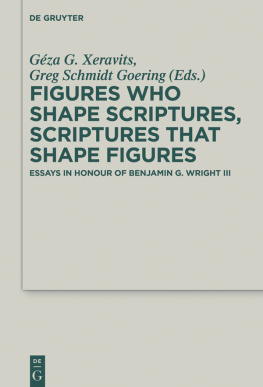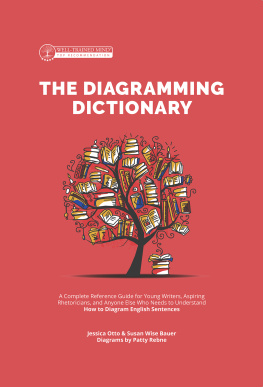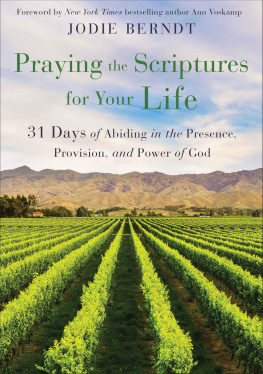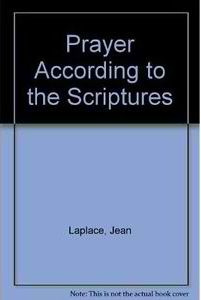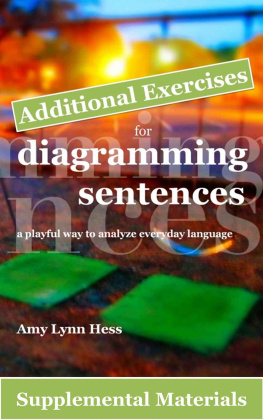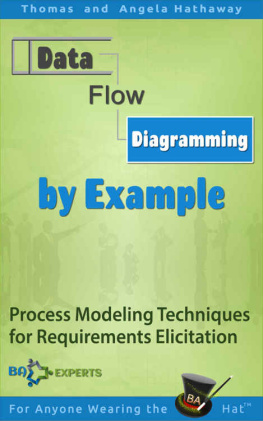Diagramming the Scriptures
Systematic Approach to Sentence Diagramming
Textbook
Shirley M. Forsen
Copyright 2010 by Shirley M. Forsen
Diagramming the Scriptures
by Shirley M. Forsen
Printed in the United States of America
ISBN 9781619045644
All rights reserved solely by the author. The author guarantees all contents are original and do not infringe upon the legal rights of any other person or work. No part of this book may be reproduced in any form without the permission of the author. The views expressed in this book are not necessarily those of the publisher.
Unless otherwise indicated, Bible quotations are taken from the King James Version. Copyright 2000 by Holman Bible Publishers.
www.xulonpress.com
Acknowledgements
The Lord Jesus Christ provided the guidance, strength, and perseverance. To Him goes all the glory and praise!
To my brother and his wife, George and Margaret Forsen, and my sister, Dixie Kidney, I owe deep gratitude for all their financial and prayerful support and encouragement.
Many friends have prayed for me for years; I could not have finished the book without their steadfast praying.
Dr. Jim Anderson, chancellor of Midwestern Baptist College, approved the choices of sections of the Scripture verses used.
Helen Budinger, Tricia Collier, and Becky Klein were vital sources of computer expertise and assistance.
Indispensable help came from residents of Foxwood Springs: Betty Goode, Darrell Hampton, Lee Keith, Kenneth Scott, Rowena Shaffer, Marjorie Slavens, and Art Tees.
Becky Young contributed to the instructions for the teacher and the student.
Laura and Stephen Blunk, homeschoolers, made great suggestions for improving the book and presented the book with me to the residents of Foxwood Springs Living Center.
The editor for the book was David Schneeberger. Proofreaders were Diana Anderson, Cathy Beard, Nancy Dillon, Glada Kelley, Helen Nichols, Lynn Pohle, and Nancy Ratcliffe.
Preface
Diagramming the Scriptures serves two purposes: to teach sentence diagramming and to teach the Scriptures. Every word in a sentence (verse) has a certain place in a diagram. This blueprint helps a person to see or understand what has been written. The end product is a solid foundation of the English language.
The value of knowing the Bible is inestimable. Without knowledge of the Bible, understanding of much literature, music, law, history, and government is limited. William McKinley, the twenty-fifth President of the United States (1843-1901), said, The more profoundly we study this wonderful book (the Bible), and the more closely we observe its divine precepts, the better citizens we will become and the higher will be our destiny as a nation. Jesus himself quoted from Deuteronomy: But he (Jesus) answered and said, It is written, Man shall not live by bread alone, but by every word that proceedeth out of the mouth of God (Matthew 4:4).
My prayer is that this book will help the student to break the Bread into edible bites for easier digestion and to lay a firm foundation for speaking and writing of the English language.
Instructions to the Teacher
Diagramming allows practice and application for grammar rules previously introduced and learned. This workbook could be used as a supplement to grammar instruction.
Master Teacher Plan
For each lesson the teacher will do the following:
| Show and explain examples. |
| Guide student practice - Practice Sheet(s). |
| Assess student progress mastery - Test Sheet. |
For each unit the teacher will do the following:
| Assess student progress mastery - Unit Test. |
For all four units the teacher will do the following:
| Assess student progress mastery - Final Test. |
Lesson Plan Notes for the Teacher
First, the student should memorize and master the five sentence patterns.
Next, the student will begin the diagramming lessons. Some lesson plans will have necessary words defined. All lessons have examples, a place for practice, and an assessment of mastery.
The first diagramming formula divides a simple sentence between the subject and the predicate.
The first five sentences are diagrammed to demonstrate this beginning formula. Review each example with students. Read aloud the first sentence. Diagram the sentence on the board or on a transparency. Explain why the entire sentence is underlined, and point out why there is a vertical line between the subject and the predicate.
For this first day of diagramming, move slowly! Students must understand that the purpose of diagramming is to enhance their understanding of how grammar works. Diagramming is merely a picture of the pieces and parts of grammar. It is a graphic organizer.
After introduction and explanation of the first five sentences and diagrams, student will practice diagramming the next five sentences. Use the blank diagram models for this practice.
Check students work for accuracy and understanding. If there are frequent mistakes, review the first examples.
Next, instruct students to read the last set of sentences. The students will copy one sentence at a time and diagram each new sentence. Check frequently for understanding.
A test after each section of diagrams will reinforce what the student has learned in the previous lesson(s).
Last, there is a final assessment of student mastery. This test covers all the sentence patterns, parts of speech, clauses, and sentence types that have been diagrammed in the book.
Instructions to Student
Diagramming is a series of formulas. Once you have mastered the formulas, you will understand and apply the grammar rules you have learned. Writing wont be a dreaded task.
First, you will learn the five basic sentence patterns (formulas) for the English language. You will learn many new terms as you study these patterns. Once we begin the diagramming, the patterns and terms will make sense.
Pattern #1 - Subject + Verb
Pattern #2 - Subject + Verb + Direct Object
Pattern #3 - Subject + Verb + Indirect Object + Direct Object
Pattern # 4 - Subject + Linking Verb + Predicate Complement








